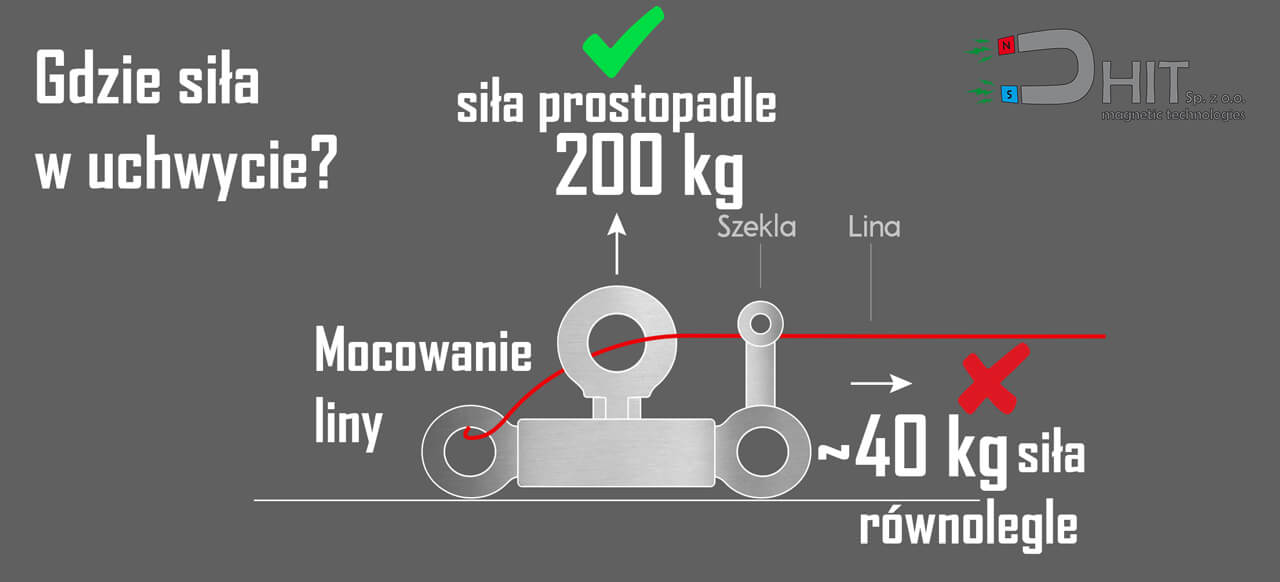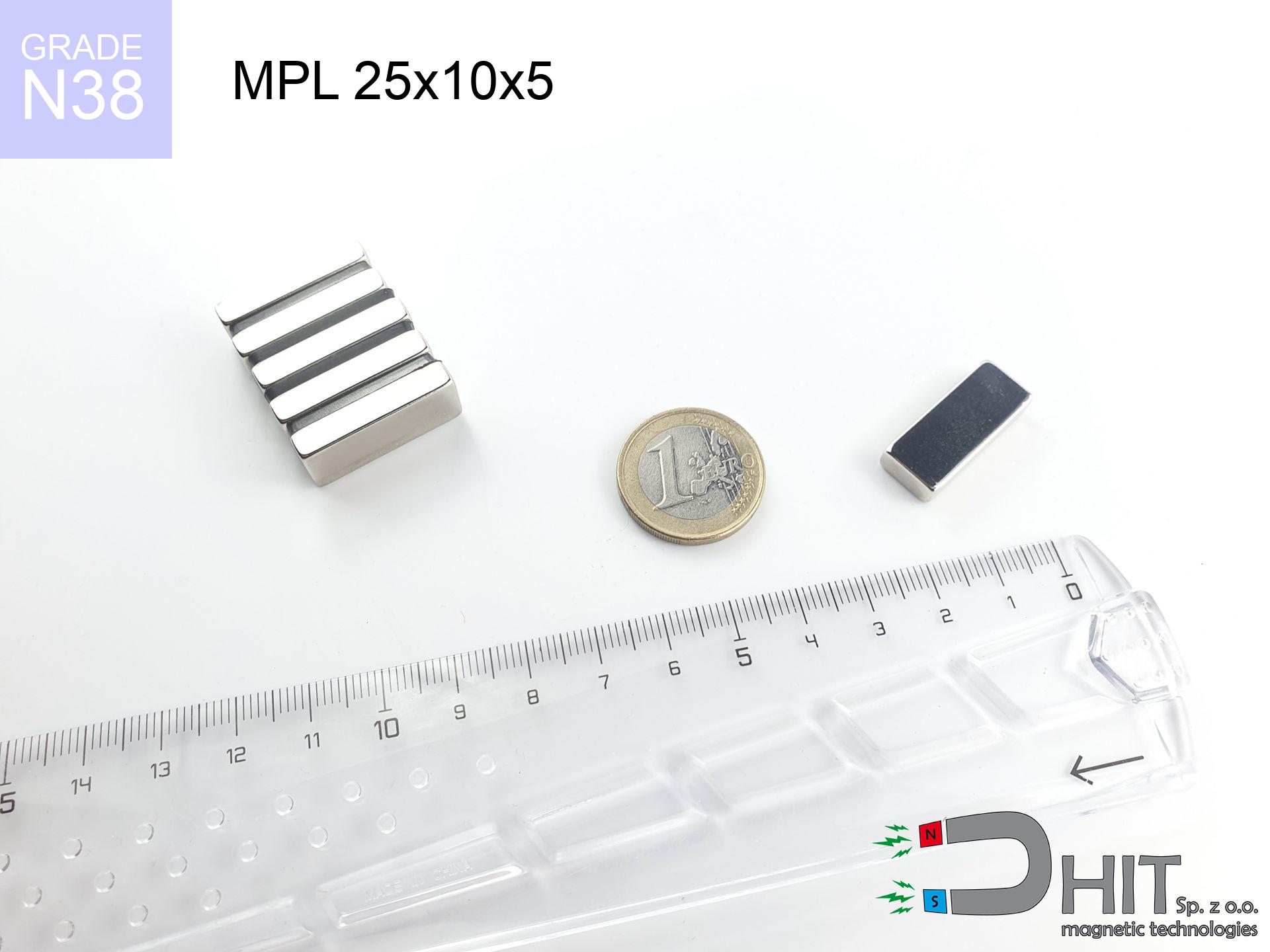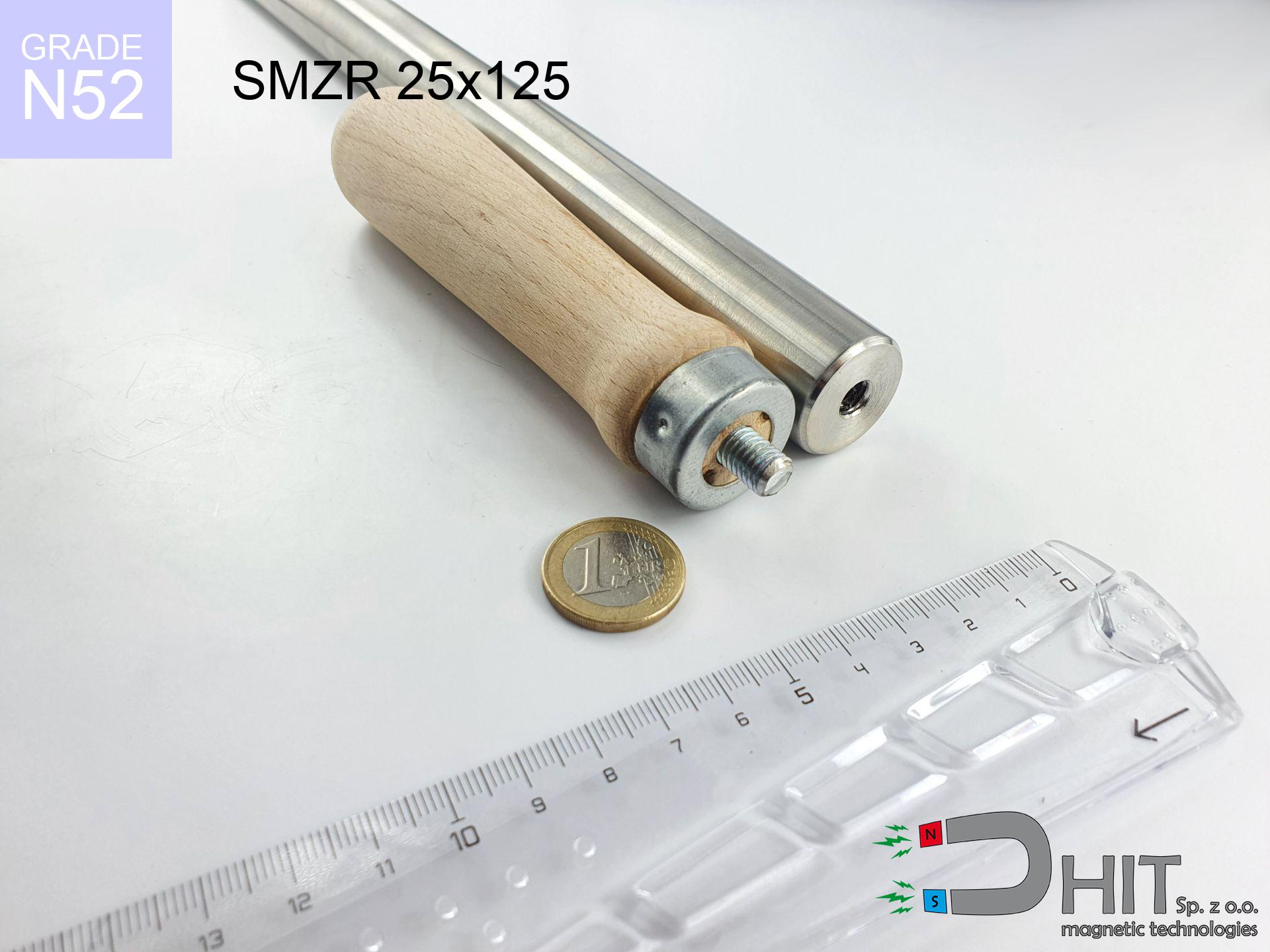UMP 67x28 [M8+M10] GW F120 kg / N38 - search holder
search holder
Catalog no 210335
GTIN: 5906301813941
Diameter Ø [±0,1 mm]
67 mm
Height [±0,1 mm]
28 mm
Weight
700 g
Load capacity
180 kg / 1765.2 N
Coating
[NiCuNi] nickel
110.00 ZŁ with VAT / pcs + price for transport
89.43 ZŁ net + 23% VAT / pcs
bulk discounts:
Need more?Want to negotiate the price?
Call us +48 22 499 98 98 or write via form on the contact page. Test the magnet's power with our power calculator.
Orders placed by 14:00 are shipped the same day.
UMP 67x28 [M8+M10] GW F120 kg / N38 - search holder
Magnetic properties of material N38
Physical properties of NdFeB
Shopping tips

Advantages and disadvantages of neodymium magnets NdFeB.
In addition to immense power, neodymium magnets have the following advantages:
- They do not lose their power (of the magnet). After approximately 10 years, their strength decreases by only ~1% (theoretically),
- They are highly resistant to demagnetization by external magnetic sources,
- Thanks to the shiny finish and nickel, gold, or silver coating, they have an aesthetic appearance,
- They have very high magnetic induction on the surface of the magnet,
- By using an appropriate combination of materials, they can achieve significant thermal resistance, allowing them to operate at temperatures up to 230°C and above...
- The ability for precise shaping or customization to specific needs – neodymium magnets can be produced in many variants of shapes and sizes, which enhances their versatility in applications.
- Key role in the industry of new technologies – are utilized in hard drives, electric motors, medical equipment or very advanced devices.
Disadvantages of neodymium magnets:
- They are prone to breaking as they are fragile when subjected to a strong impact. If the magnets are exposed to impacts, we recommend using magnets in a protective case. The steel housing in the form of a holder protects the magnet from impacts and simultaneously increases its overall strength,
- Magnets lose their power due to exposure to high temperatures. In most cases, when the temperature exceeds 80°C, these magnets experience permanent loss in strength (although it is worth noting that this is dependent on the form and size of the magnet). To avoid this problem, we offer special magnets marked with the [AH] symbol, which exhibit high temperature resistance. They can operate even at temperatures as high as 230°C or more,
- They rust in a humid environment. For outdoor use, we recommend using waterproof magnets, such as those made of rubber or plastic,
- The use of a cover - a magnetic holder is recommended due to the limited production capabilities of creating threads or complex shapes in the magnet
- Possible danger to health from tiny fragments of magnets can be dangerous, if swallowed, which becomes significant in the context of children's health. It's also worth noting that miniscule components of these devices have the potential to be problematic in medical diagnosis in case of swallowing.
Caution with Neodymium Magnets
Neodymium magnets can demagnetize at high temperatures.
Although magnets have shown to retain their effectiveness up to 80°C or 175°F, this temperature may vary depending on the type of material, shape, and intended use of the magnet.
Neodymium Magnets can attract to each other, pinch the skin, and cause significant injuries.
Magnets will bounce and also contact together within a radius of several to almost 10 cm from each other.
Neodymium magnets are among the strongest magnets on Earth. The surprising force they generate between each other can surprise you.
To use magnets properly, it is best to familiarize yourself with our information beforehand. This will help you avoid significant harm to your body and the magnets themselves.
If you have a nickel allergy, avoid contact with neodymium magnets.
Studies show a small percentage of people have allergies to certain metals, including nickel. An allergic reaction often manifests as skin redness and rash. If you have a nickel allergy, you can try wearing gloves or simply avoid direct contact with nickel-plated neodymium magnets.
Make sure not to bring neodymium magnets close to the TV, wallet, and computer HDD.
Strong fields generated by neodymium magnets can damage magnetic storage media such as floppy disks, credit cards, magnetic ID cards, cassette tapes, video tapes, or other similar devices. In addition, they can damage televisions, VCRs, computer monitors, and CRT displays. Avoid placing neodymium magnets in close proximity to electronic devices.
Magnets should not be treated as toys. Therefore, it is not recommended for youngest children to have access to them.
Neodymium magnets are not toys. You cannot allow them to become toys for children. In such a situation, surgery is necessary to remove them. In the worst case scenario, it can result in death.
Dust and powder from neodymium magnets are flammable.
Do not attempt to drill into neodymium magnets. Mechanical processing is also not recommended. If the magnet is crushed into fine powder or dust, it becomes highly flammable.
Keep neodymium magnets away from people with pacemakers.
In the case of neodymium magnets, there is a strong magnetic field. As a result, it interferes with the operation of a heart pacemaker. Even if the magnetic field does not affect the device, it can damage its components or deactivate the entire device.
Neodymium magnetic are incredibly fragile, they easily fall apart and can become damaged.
Neodymium magnets are characterized by significant fragility. Neodymium magnets are made of metal and coated with a shiny nickel surface, but they are not as hard as steel. In the event of a collision between two magnets, there may be a scattering of fragments in different directions. Protecting your eyes is crucial in such a situation.
Keep neodymium magnets as far away as possible from GPS and smartphones.
Neodymium magnets generate strong magnetic fields that interfere with magnetometers and compasses used in navigation, as well as internal compasses of smartphones and GPS devices.
Safety rules!
In order to show why neodymium magnets are so dangerous, read the article - How dangerous are strong neodymium magnets?.

![magnets for fishing in water UMP 67x28 [M8+M10] GW F120 kg / N38 magnets for fishing in water UMP 67x28 [M8+M10] GW F120 kg / N38](https://cdn3.dhit.pl/graphics/banners/magnet.webp)
![UMP 67x28 [M8+M10] GW F120 kg / N38 - search holder](https://cdn3.dhit.pl/graphics/products/ump67x28-m8+m10-gw-f-120-kg--tis.jpg)


![UMGZ 32x18x8 [M6] GZ / N38 - magnetic holder external thread UMGZ 32x18x8 [M6] GZ / N38 - magnetic holder external thread](https://cdn3.dhit.pl/graphics/products/um-32x18x8-m6-gz-jix.jpg)


